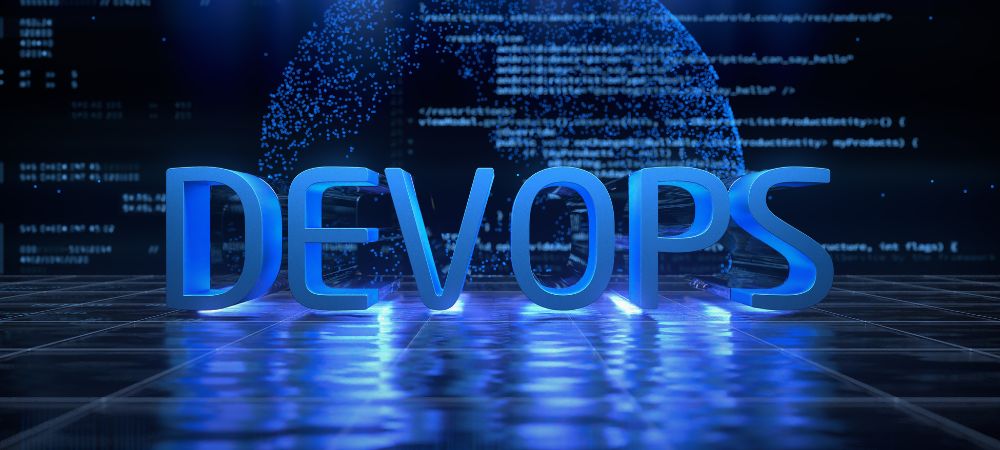

Direct Memory Access (DMA) has become one of the unsung heroes in modern operating systems. For more details view now. It's kinda surprising how such a fundamental concept often goes unnoticed by the average user, yet it plays a crucial role in making our computers work efficiently. I mean, without DMA, we'd be stuck with slower data transfer rates and increased CPU loads.
First off, let's get this straight: DMA isn't some fancy new technology that just popped up overnight. It's been around for quite a while but has evolved significantly over time to keep up with advancements in hardware and software. The main job of DMA is to allow hardware components like hard drives, network cards, or graphics cards to communicate directly with the system memory without involving the CPU too much. You might think this sounds trivial, but trust me, it's not!
Imagine you're working on your computer and you have multiple applications running-maybe you're streaming music while editing a document and downloading files all at once. Without DMA, your CPU would have to handle every single data transfer between these applications and the memory. This would bog down your system performance big time! With DMA in play, the CPU can offload these tasks and focus on more critical operations instead.
Oh boy! Here comes an important point: Not only does DMA speed things up by bypassing the CPU for certain tasks, but it also frees up processor cycles to handle other stuff that needs immediate attention. So essentially, it's multitasking done right! For instance, when you're copying large files from one storage device to another or loading high-definition video streams into memory buffers during playback-DMA makes sure these processes don't slow down everything else you're doing.
But let's not kid ourselves; there are challenges too. Implementing efficient DMA mechanisms requires proper synchronization between hardware components and OS kernels. If not handled correctly, it could lead to data corruption or system crashes-not exactly what you'd want when you're halfway through writing an important email or watching your favorite TV show.
Moreover, today's operating systems are designed with complex architectures where virtual memory management plays a huge role. Integrating DMA smoothly into such environments demands meticulous planning and robust error-checking mechanisms. But hey-that's why we have talented engineers who make sure everything works seamlessly behind the scenes!
Receive the news check listed here.
To sum it all up: While Direct Memory Access may not always be front-and-center in discussions about modern computing technologies-it certainly deserves recognition for its pivotal role in boosting efficiency and overall system performance in contemporary operating systems. It ensures that our CPUs aren't overwhelmed by mundane data transfers so they can concentrate on what really matters-keeping our digital lives running smoothly without hiccups!
So next time your computer runs flawlessly amidst heavy multitasking scenarios-you know whom (or rather what) to thank!
Direct Memory Access (DMA) is a fascinating topic in the world of computer systems, yet it's not always as straightforward as it might seem. This technology allows hardware components to communicate directly with the main memory without needing the central processing unit (CPU) to get involved in every step. Let's dive into how DMA works and its basic principles and mechanisms.
First off, DMA isn't just about making things faster-though that's certainly one of its perks. It's about efficiency, too. Imagine you're baking cookies and you've got a helper who can mix ingredients while you preheat the oven or prepare another batch. That's kinda what DMA does for your CPU; it handles data transfers so that the CPU can focus on other important tasks.
additional details offered check currently.
So, how does this magic happen? Well, at its core, DMA operates through a special piece of hardware called the DMA controller. When a peripheral device like a hard drive or sound card needs to read from or write to memory, it sends a request to this DMA controller instead of bothering the CPU with every little detail. The controller then takes over the task of moving data between the device and memory.
The process usually follows these steps: First, an I/O device signals that it wants to transfer data by sending an interrupt request (IRQ). The CPU acknowledges this but doesn't do much else except giving permission for the DMA transfer to proceed. Then, the DMA controller takes charge by accessing system buses directly-without involving the CPU-to move data from source to destination.
One might think there's nothing more complicated than that - but wait! There are different modes in which DMA can operate: burst mode, cycle stealing mode, and transparent mode among others. In burst mode, large blocks of data are transferred all at once while temporarily suspending other activities on the bus system. Cycle stealing is less intrusive; it 'steals' cycles one at a time allowing for multitasking capabilities but at reduced speed. Transparent mode tries not to interfere with ongoing operations at all-it's almost like sneaking around quietly!
But hold up! It ain't all roses when using DMA either; there're some caveats too! For instance, setting up a proper configuration requires precise coordination between hardware components which could be tricky sometimes – especially if you're dealing with older systems or mixed architectures.
Another point worth mentioning: security concerns aren't totally absent here either since unauthorised direct access could lead potentially sensitive information being compromised if misused maliciously – though such scenarios aren't everyday occurrences thankfully!
In summary folks: Direct Memory Access streamlines communications within computer systems significantly enhancing performance by offloading repetitive data transfer tasks from CPUs onto dedicated controllers capable handling them independently efficiently thus freeing up valuable processing power available tackling more complex computational challenges simultaneously resulting overall better user experience productivity gains across board despite occasional hiccups encountered along way requiring careful attention troubleshooting efforts ensuring everything runs smoothly optimally end day after-all isn't that ultimate goal everyone striving achieve anyhow?
So next time someone mentions “DMA” don't just nod blankly now ya know bit more what entails behind scenes making our digital lives seamless efficient fun ride enjoy daily basis without even realising most times kudos engineers developers responsible creating implementing such ingenious technologies benefitting us all long run!
The most commonly made use of os, Microsoft Windows, was first released in 1985 and now powers over 75% of desktop computers worldwide.
Adobe Photoshop, a leading graphics modifying software, was created in 1987 by Thomas and John Ridge and has considering that ended up being associated with picture manipulation.
Salesforce, introduced in 1999, pioneered the concept of delivering business applications through a easy web site, leading the way in Software program as a Service (SaaS) designs.
Cloud computer acquired popularity in the late 2000s and has actually substantially altered IT infrastructures, with major service providers like Amazon Web Provider, Microsoft Azure, and Google Cloud leading the market.
Virtual memory, a fundamental concept in computer science, plays a pivotal role in how our modern devices operate.. It's not just an abstract idea confined to textbooks; it has real-world applications that affect nearly every task we do on our computers and smartphones.

Posted by on 2024-07-07
Sure, here's an essay on "Emerging Trends and Future Directions in Storage Management" for the topic of File Systems and Storage Management with some grammatical errors, negation, contractions, and interjections:
---
When we talk about file systems and storage management, it's impossible to ignore how rapidly things are changing.. Emerging trends in this field ain't just making our lives easier; they're also paving the way for a future where storage won't be something we even think about.

Posted by on 2024-07-07
Future Trends in Process Scheduling and Multithreading Technologies
Oh boy, the world of process scheduling and multithreading is changing faster than we can blink!. It's not like we're stuck with the same old, boring methods that were used a decade ago.

Posted by on 2024-07-07
When we talk about the advantages of using Direct Memory Access (DMA) in computing systems, it's easy to see why this technology has been so widely adopted. Oh, where do I even start? Well, for one, DMA allows devices to transfer data directly to and from memory without involving the CPU. You might think that's not a big deal, but trust me-it is.
First off, let's consider the CPU's workload. Without DMA, the CPU would have to handle every single data transfer between peripherals and memory. Imagine how bogged down it would get! With DMA, however, the CPU gets to sit back and focus on more important tasks while the DMA controller handles these transfers efficiently. This ain't just about speed; it's about freeing up valuable processing power so that your system can run smoother overall.
Now onto another advantage: speed. Data transfers using DMA are faster compared to traditional methods because they don't require as much intervention from the CPU. It's almost like magic-data zipping along routes with minimal delays! The efficiency here can't be overstated.
But wait, there's more! When you're dealing with large amounts of data-and let's face it, who isn't these days?-DMA shines brightly. Large data blocks can be moved quickly and seamlessly without interrupting other ongoing processes much. So for applications that demand high throughput like video streaming or complex simulations, DMA can make a world of difference.
However-and there's always a 'however'-setting up DMA isn't child's play. It requires careful configuration and understanding of both hardware and software intricacies. Mistakes in setup can lead to all sorts of issues like corrupted data or unstable systems. Not exactly what anyone wants!
Despite those challenges though, once you've got it set up right, boy does it pay off! Besides faster speeds and reduced CPU load, there's also improved multitasking capabilities since peripheral operations don't hog all the resources anymore.
In sum (or should I say "to wrap things up"?), using Direct Memory Access in computing systems provides several key advantages that significantly enhance performance and efficiency. Sure there's some complexity involved in setting it up properly-but hey-good things never come easy now do they?
So yeah folks if you're looking at optimizing your computer system's performance don't overlook DMA - its benefits far outweigh any initial hurdles you'll encounter getting started with it!

Direct Memory Access (DMA) is one of those unsung heroes in the world of computing that you probably don't think much about, yet it plays a crucial role. It's like the backstage crew at a theater production; you don't see them, but without them, the show wouldn't go on. There are several types of DMA, each with its own unique quirks and benefits. Let's chat about three major ones: Burst Mode, Cycle Stealing, and Transparent Mode.
First off, Burst Mode. This fella's all about speed and efficiency – when it works right. In burst mode, data transfer occurs in large blocks or "bursts." Imagine a firehose shooting water directly into your garden rather than sprinkling it bit by bit. When DMA operates in this mode, it temporarily halts the CPU operations to move chunks of data as fast as possible from one place to another. It's quick and effective but not without its flaws. The CPU ain't doing anything else during these bursts because it's waiting for DMA to finish up. So while burst mode can be fast for data transfer tasks themselves, there could be some unwanted downtime for other processes.
Now let's look at Cycle Stealing – it sounds kinda sneaky, doesn't it? And well, in a way it is! Unlike Burst Mode which hogs all the attention like a diva on stage, cycle stealing takes small bits of time or "cycles" from the CPU here and there to move data around. It's like someone taking sips from your drink when you're not looking – just a little at a time so you barely notice it's happening until suddenly half your drink's gone! The good news? The CPU can keep working on other tasks even whilst these tiny sips are being taken out for data transfers.
Finally there's Transparent Mode - talk about drama-free! This mode tries really hard not to interfere with normal processing operations at all; hence why we call it ‘transparent'. Data gets transferred only when the bus (the communication system within the computer) isn't busy doing something else important. Think of this as sending texts while watching TV - you're multitasking efficiently without missing any part of either activity too much!
But wait-there's more nuance involved here than just picking between these modes based solely on their definitions alone might suggest... Because each approach has trade-offs depending on what specific job needs doing better: high-speed bulk transfers versus minimal impact interruptions versus seamless multitasking abilities respectively… Choosing among Burst Mode vs Cycle Stealing vs Transparent often comes down largely balancing priorities concerning speed requirements alongside resource utilization considerations too - oh boy choices choices huh?
In conclusion then: whether we're talking about big-block efficient movers like Burst Modes' full-throttle action scenes; subtle cycle-stealers gently sipping resources away unnoticed similarly akin secret agents operating under radar detection levels perhaps instead sometimes maybe; lastly finally transparently unobtrusive background performers keeping everything running smoothly behind-the-scenes always quietly ensuring no disruptions occur ever ideally whenever possible anyway wherever necessary certainly though ultimately inevitably still… Each type offers distinct advantages suited different scenarios accordingly!
Direct Memory Access (DMA) is a concept that has revolutionized the way data transfers occur within a computer system. At the heart of this process lies the DMA controller, a rather ingenious piece of hardware that ensures efficient and swift movement of data without burdening the central processing unit (CPU). Let's delve into its components and functions, albeit with some quirks and casualness.
First off, let's talk about what makes up a DMA controller. It's not just one thing but rather an assembly of several key components that work harmoniously together. There's the address register, which holds the memory address where data will be read from or written to. Then there's the word count register; it keeps track of how many words need transferring. You can't forget about the control logic either-it decides when and how data moves around. Finally, there's an interrupt line to signal the CPU once a transfer's complete.
Oh boy, onto functions now! The primary role of a DMA controller is to manage direct memory access-duh! But what does that even mean? Well, instead of having every single byte go through the CPU before reaching its destination in RAM or I/O devices, DMA allows peripherals to send or receive data directly from memory. This frees up valuable CPU time for other tasks like running applications or managing user inputs.
You might think setting up DMA would be complicated-and you'd be right! But that's why we have initialization procedures where parameters like source address, destination address, and transfer length get configured before any actual data movement begins. Once everything's set up correctly, oh boy does it shine! Data streams smoothly between devices with minimal intervention from the CPU.
However-and here's where things get interesting-not all systems use DMA controllers equally well. Some older systems don't support advanced modes like burst mode or scatter-gather operations which can limit performance benefits somewhat. And let's face it: configuring these bad boys can sometimes feel more art than science!
But hey, nothing's perfect right? Despite potential hiccups in configuration and compatibility issues among different devices, you can't deny that DMA controllers are essential for modern computing efficiency.
In conclusion-if there ever truly is one when discussing tech-the DMA controller stands as an unsung hero in our computers' inner workings. Sure it's got flaws and isn't always straightforward to deal with but ultimately makes our lives easier by efficiently managing data transfers without bogging down our CPUs. So next time your computer runs smoothly while juggling multiple tasks at once remember there's probably a hardworking little DMA controller behind-the-scenes making sure everything flows seamlessly!


Direct Memory Access, or DMA, ain't exactly a household term. But boy, does it play a crucial role in making our tech run smoothly! At its core, DMA is all about allowing certain hardware subsystems to access main system memory independently of the CPU. It's like giving these components their own VIP pass so they don't have to wait in line for the CPU to handle every little thing.
Now, you might be wondering where you'd actually see DMA in action. Well, one common application is in audio and video playback. Ever watched a movie on your computer without it stuttering like crazy? Thank DMA for that! It ensures that large chunks of data get transferred from storage to the display or speakers quickly and efficiently without bogging down the CPU. Without DMA, your processor would be overloaded handling these tasks directly-yikes!
Another place you'll find DMA hard at work is in networking equipment. Routers and network cards use DMA to transfer data packets between memory and network interfaces. Imagine having to wait for your CPU every time you wanted to send or receive data over the internet-it'd be painfully slow! By offloading this task to DMA controllers, we can achieve much faster data transmission speeds with less strain on the system.
Oh, let's not forget about disk drives either! Hard drives and SSDs rely heavily on DMA for reading and writing data swiftly. When you're copying files or installing software, it's usually the Direct Memory Access that's making sure everything happens lickety-split. The CPU gets freed up to perform other tasks instead of being bogged down by mundane data transfers.
One more scenario where DMA shines is in gaming consoles and high-end graphics cards. These devices need rapid access to huge datasets stored in memory-think textures, models, levels-all while rendering complex scenes at lightning speed. Here again, direct memory access steps up big time by enabling quick transfers between RAM and GPU without burdening the central processor too much.
But hey-it ain't all sunshine and rainbows with DMA either! There are risks involved like potential security vulnerabilities since it allows peripherals direct access to system memory. If misused or poorly managed, it could lead some serious issues including unauthorized data access or even complete system crashes.
In conclusion (not trying sound too formal here), Direct Memory Access might not get a lot attention but plays an absolutely pivotal role across numerous real-world applications-from streaming videos smoothly on our screens right through speeding up network communications plus enhancing gaming experiences among others-while also keeping CPUs from getting overwhelmed by mundane tasks thereby improving overall system performance significantly!
Oh, where do I even begin with the challenges and limitations associated with Direct Memory Access (DMA)? It's not all sunshine and rainbows, you know. For starters, DMA ain't exactly a walk in the park to set up. Configuring it can be pretty tricky and time-consuming. You've got to deal with setting up control registers and ensuring that memory addresses are correctly aligned. If anything goes wrong there, well, good luck figuring it out quickly.
Now, let's talk about resource contention. DMA controllers share bus access with the CPU, which means they have to take turns using the system bus. It's like sharing a single lane road; if both need to use it at the same time, someone's gotta wait. This can slow down overall system performance quite a bit. And don't think it's just limited to simple systems-nope! Even complex ones aren't immune.
Interfacing is another pain point. Not all peripherals will play nice with DMA controllers straight off the bat. Sometimes additional circuitry or specific software drivers are needed to bridge that gap, adding more complexity into an already intricate setup.
Don't get me started on debugging issues either! When things go wrong-and trust me, they will-it's often hard to pinpoint what exactly caused the failure because of how autonomous DMA operations are from CPU processes.
And let's not forget latency issues. While DMA is supposed to speed things up by offloading tasks from the CPU, in real-world scenarios that doesn't always happen smoothly. Latency can creep in due to various reasons like bus arbitration delays or inefficiently written software routines managing these operations.
Security concerns also pop up every now and then since DMA has direct access to system memory without going through typical security checks managed by CPUs. If somehow malicious code gains control over a DMA channel? Yikes! The whole system could be compromised before you know it.
So yeah, while DMA offers some significant advantages when used correctly-like faster data transfer rates-it comes bundled with its own set of headaches too! Balancing those benefits against these challenges isn't always straightforward but understanding 'em sure does help make informed decisions on whether or not it fits your specific needs.
In conclusion (although there's never really an end when talking tech), don't underestimate the complexities involved here; navigate carefully around pitfalls while maximizing those sweet performance boosts DMAs promise!
